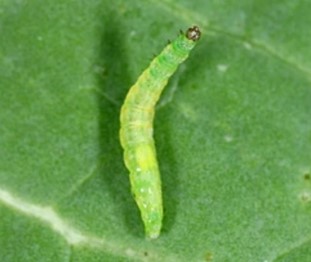
Plutella xylostella is a moth species of the family Plutellidae. Theyare considered pests as they feed on the leaves of cruciferous crops and plants that produce glucosinolates. Originally, pesticides were used to kill the moths but plutella xylostella have developed resistance to many of the common chemicals. For this reason, new biological and chemical controls, as well as different planting methods are being pursued to reduce the destruction caused by the moths. The system of CRISPR/Cas9, zinc-finger nucleases (ZFNs) and transcription activator-like effector nucleases (TALEN) are highly efficient genetic manipulation systems that can be applied to the study of gene function and even genetic regulation of populations.
Plutella xylostella is an important worldwide agricultural pest. Due to its short generation cycle, severe overlap and high genomic heterozygosity, it is becoming increasingly difficult to control because of the rapid development of resistance under the pressure of intense insecticide selection. Lifeasible provides the gene editing services for plutella xylostella with ZFNs, TALEN and CRISPR/Cas9. We use the technology to edit several genes that associated with normal growth and development of plutella xylostella to control their population.
| Editable genes | Relevant traits exhibited after editing |
| Gadd45g |
|
| Br-Z2 Br-Z3 |
|
| CYP6BF1V4 |
|
| Hanabi |
|
| Toll-6 |
|
| Pxlys |
|
| PxCAD1 Cry1Ac |
|
| PxyRACK1 |
|
| Fl(2)d |
|
We can reduce the number of plutella xylostella offspring by editing related genes, such as increasing the susceptibility of plutella xylostella to drug resistance, deformation or sterility of adult plutella xylostella, increasing the mortality rate, decreasing the immune defense capacity and thus death by infection, etc.
Lifeasible offers three technologies include ZFNs, TALEN and CRISPR/Cas9 to the gene editing services in plutella xylostella and later services with some advantages described above. We can edit growth and development-related genes to reduce the resistance of plutella xylostella or to reduce the larval birth rate or increase the mortality of plutella xylostella to reduce the population size of offspring. If you are interested in our services or if you have any questions, please click online inquiry for more detailed information.